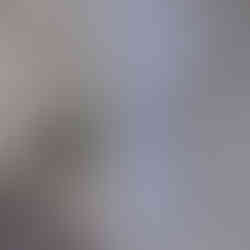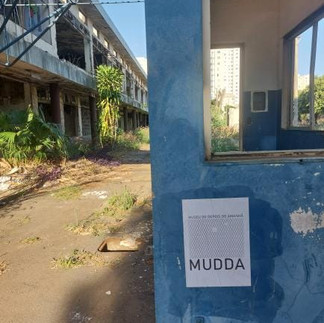Museum of the After Tomorrow
- Glauco Gonçalves
- Sep 1, 2024
- 5 min read
[Co-authors: beta reis and Henrique de La Fonte]
“But the people of the city and the priests [and the government and the speculators] there thought it was not to their taste, did not like or did not understand my work and ordered to cover my frescoes with lime [asphalt blanket and then Makita]. Their right, I think […]. Over time, and with the removal of the lime, my frescoes may reappear […], perhaps now better understood.” [1]
A little before the day before yesterday: nearing the 1960s, Celg inaugurated its building in Goiânia. Near Lago das Rosas, on the so-called Avenida Anhanguera (Avenida Maria Grampinho, since the day after tomorrow). For this, they had invited none other than engineer Oton Nascimento, artist and architect Gustav Ritter, and artist Frei Confaloni. There emerged a building that rivaled the best projects of modern architecture from this first generation.
In 2016, Celg was privatized and its headquarters became a neglected asset, tossed onto the sidewalk, discarded by the State, not yet infested by pests, but on its way to becoming so. A group of vultures—I mean, real estate speculators—purchased the building, which Enel had acquired as a bonus along with Celg. And guess what? They rented the building that belonged to the State of Goiás to… the State of Goiás! Which now pays rent to use the building it owned for half a century and installs the Secretariat of Education (Seduc) there.
In early 2020, just before the end of the world that began and has already ended, the Goiás State Secretariat of Education moved to the Vila Nova sector (also along Avenida Maria Grampinho, still called Anhanguera at the time), and the old Celg building, now owned by three private groups, simply remained vacant. More than that: it was left wide open, as if waiting for chaos or chance; open strategically as a gesture of disregard for any preservation efforts. A race ensued with two sides. On one side, the Architecture Council and the Heritage Superintendency aiming to preserve this vibrant piece of history in concrete (Oton and Gustav) and in unique fresco strokes (Confaloni). On the other, owners eager for demolition against preservation.
In March 2020, the nearly nine-meter-wide panel painted by Frei Confaloni in the late 1950s awoke in flames (see text published on this same Ermira at https://ermiracultura.com.br/2023/09/10/confaloni-conflagrado-notas-da-extirpacao-da-na-especulacao/). Violently covered with asphalt blanket from top to bottom, side to side. Some say it was an order from… curiously, the roof tiles were also removed to let water do its work, shortly after the jatobá, which was also to be preserved by the City Hall, fell as if poisoned.
In August 2023, the same State of Goiás and the same building owners became heroes by paying a company to cut the conflagrated panel into pieces and transport it to the catacombs of the Museu de Arte Contemporânea de Goiás (MAC), where it rests impassively and without a single touch of restoration since then.
In light of all this, we decided to infiltrate this Museum of the After Tomorrow. Invented by us (Glauco Gonçalves, Henrique de La Fonte, Luiz da Luz, beta reis, and Robert Valentin), but produced by everyone mentioned here: from disregard to chance.
It is a living museum! Filled with an endless profusion of non-human lives and profoundly human works and presences. Shopping malls are lifeless.
It features a “permanently temporary” exhibition, where plants, fungi, mosses, and other beings contribute to the creation of works that make up MUDDA. Alongside, a collection of hundreds of tags and graffiti. In a place where residents of the art of survival circulate.
MUDDA: a museum infiltrated and made of infiltrations. Photos: Personal Collection
A deliberate act of audacity: to forge, impose against the grain, a museum by force. Here emerges a collection of multi-species authorship that uniquely associates, composing the spatiality of the exhibition. A museum infiltrated and made of infiltrations, where water is a creator, dancing in never-straight forms. The inauguration of a museum that, once opened, never closes.
Certainly, the greatest work in MUDDA's collection is the absence of a specific work. The hole left by Confaloni synthesizes the extirpation of history: eight tons of memory removed after the conflagrated panel. The hole where the panel once was becomes a canvas of sky, Cerrado sky, sky of the severed panel.
The curatorial choice to mark works with anthropic and post-anthropic authorship aims to encompass the varied creative forces at play. The starting point is the building designed by the human being Gustav Ritter, but since its planned abandonment, it has been shaped by the brushstrokes of time and multiple agencies. A canvas for the fungi and plant kingdoms, and also a canvas for so-called marginal human art.
In every second of the last four years, production has not ceased. It keeps changing. Multiple worlds emerge. In the bushes of the second floor, future-forests announce themselves. A museum that synthesizes the West’s quintessential work: a landscape of debris, an incessant factory of collapses. It is gratifying to state that this is not one of those nostalgic defenses of preserving the most conventional and needy architectural form.
Paradoxically, even so, the attack on history is evident here. It is within this disregard of historical status that we play, create, and inventory. It is only due to the disdain, the ignorance of Ritter and Confaloni, that some creative/destructive appropriation of this masterpiece of Goianian architecture is allowed.
Museum of collapses. Let the building collapse slowly: it is a living center of coexistence. Plaster, glass, and the structure aim at those passing by on the major thoroughfare on Anhanguera (re-titled by us Avenida Maria Grampinho).
Without windows, it is entirely taken by gaps on its two long, almost infinite sides. Light abounds, the cobogó weaves across the front of the building and makes its patterns on the floor. In fact, the only closed part on both sides of the building was Confaloni's mural.
From the collapse emerges the collection. We invented a game to find titles for the vastness of the works. Thus, we reaffirm the artistic gesture of touching the materiality and transmuting it into something else.
Confa is gone. New states of matter emerge.
Thus, we are preserving what is falling, and what has not been preserved keeps falling.
We welcome all forms of life and states of matter!
[1] Interview of Frei Confaloni with Jacqueline S. Vigário. “Diante da Sacralidade Humana: Produção e Apropriações do Moderno em Nazareno Confaloni (1950-1977).” Thesis (Doctorate) – Postgraduate Program in History at the Federal University of Goiás (UFG). Goiânia, 2017, p. 74; brackets: our additions.


















Comments